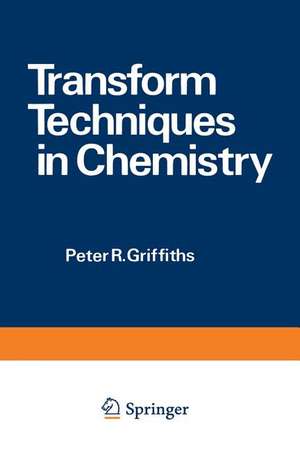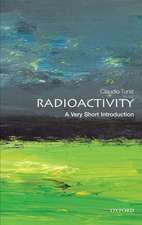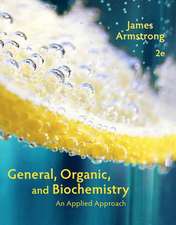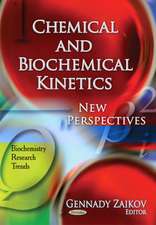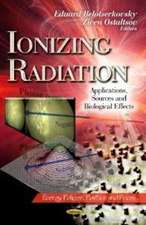Transform Techniques in Chemistry: Modern Analytical Chemistry
Editat de P. Griffithsen Limba Engleză Paperback – 12 dec 2012
Din seria Modern Analytical Chemistry
- 15%
 Preț: 655.78 lei
Preț: 655.78 lei - 18%
 Preț: 949.73 lei
Preț: 949.73 lei - 18%
 Preț: 950.21 lei
Preț: 950.21 lei - 18%
 Preț: 952.89 lei
Preț: 952.89 lei - 18%
 Preț: 958.25 lei
Preț: 958.25 lei - 18%
 Preț: 951.77 lei
Preț: 951.77 lei - 18%
 Preț: 1235.57 lei
Preț: 1235.57 lei - 18%
 Preț: 1225.16 lei
Preț: 1225.16 lei - 18%
 Preț: 779.71 lei
Preț: 779.71 lei - 15%
 Preț: 643.65 lei
Preț: 643.65 lei - 15%
 Preț: 643.00 lei
Preț: 643.00 lei - 15%
 Preț: 646.11 lei
Preț: 646.11 lei -
 Preț: 387.75 lei
Preț: 387.75 lei -
 Preț: 397.38 lei
Preț: 397.38 lei -
 Preț: 391.99 lei
Preț: 391.99 lei - 15%
 Preț: 649.22 lei
Preț: 649.22 lei -
 Preț: 389.88 lei
Preț: 389.88 lei -
 Preț: 391.79 lei
Preț: 391.79 lei -
 Preț: 382.57 lei
Preț: 382.57 lei
Preț: 644.82 lei
Preț vechi: 758.60 lei
-15% Nou
Puncte Express: 967
Preț estimativ în valută:
123.38€ • 128.83$ • 101.89£
123.38€ • 128.83$ • 101.89£
Carte tipărită la comandă
Livrare economică 16-30 aprilie
Preluare comenzi: 021 569.72.76
Specificații
ISBN-13: 9781468424058
ISBN-10: 146842405X
Pagini: 404
Ilustrații: XVIII, 386 p. 144 illus.
Dimensiuni: 152 x 229 x 21 mm
Greutate: 0.54 kg
Ediția:Softcover reprint of the original 1st ed. 1978
Editura: Springer Us
Colecția Springer
Seria Modern Analytical Chemistry
Locul publicării:New York, NY, United States
ISBN-10: 146842405X
Pagini: 404
Ilustrații: XVIII, 386 p. 144 illus.
Dimensiuni: 152 x 229 x 21 mm
Greutate: 0.54 kg
Ediția:Softcover reprint of the original 1st ed. 1978
Editura: Springer Us
Colecția Springer
Seria Modern Analytical Chemistry
Locul publicării:New York, NY, United States
Public țintă
ResearchCuprins
1 Transform Techniques in Chemistry: Past, Present, and Future.- 1.1. The Past.- 1.2. The Present.- 1.3. The Future.- 2 The Fourier Transform and Related Concepts: A First Look.- 2.1. Introduction: Guitar Tuning.- 2.2. Differences in Space and Time: Phase.- 2.3. Sums, Integrals, and Orthogonality.- 2.4. Various Expressions of Fourier Transform Relationships.- 2.5. Concepts and Corollaries for Fourier Transforms.- 2.6. More on Phase and Phase Correction.- 2.7. Apodization and Resolution Enhancement.- 2.8. The Discrete Fourier Transform.- 2.9. Walsh and Hadamard Transforms.- 2.10. Summary.- 3 Multichannel Methods in Spectroscopy.- 3.1. Introduction.- 3.2. Spectrometer Sources and Detectors.- 3.3. Weights on a Balance: The Multichannel Advantage. Multiplex Methods.- 3.4. Hadamard Multiplexing of Spatially Dispersed Spectra.- 3.5. Advantages of Coherent Radiation in Spectrometer Detection.- 3.6. Fourier Methods.- 3.7. Summary: Relations Between Different Spectrometers.- 3.8. Appendix. Noise Considerations for Multichannel Spectrometers.- 4 Data Handling in Fourier Transform Spectroscopy.- 4.1. The Computer System.- 4.2. The Fourier Transform.- 4.3. Writing a Fourier Transform for a Minicomputer.- 4.4. Noise in the Fourier Transform Process.- 4.5. Summary.- 5 Fourier Transform Infrared Spectrometry: Theory and Instrumentation.- 5.1. Introduction.- 5.2. The Michelson Interferometer.- 5.3. Resolution and Apodization.- 5.4. Effect of Beam Divergence.- 5.5. Mirror Drive Tolerance.- 5.6. Dynamic Range.- 5.7. Scan Speed and Spectral Modulation.- 5.8. Data Acquisition.- 5.9. Beamsplitters.- 5.10. Lamellar Grating Interferometers.- 5.11. Detectors for FT-IR.- 5.12. Auxiliary Optics.- 5.13. Data Systems.- 5.14. Dual-Beam Fourier Transform Spectroscopy.- 6 Infrared Fourier Transform Spectrometry: Applications to Analytical Chemistry.- 6.1. FT-IR versus Grating Spectrophotometers.- 6.2. Spectra of Transient Species.- 6.3. Low-Energy Absorption Spectrometry.- 6.4. Difference Spectroscopy.- 6.5. Reflection Spectrometry.- 6.6. Emission Spectrometry.- 6.7. Atomic Spectrometry.- 7 Hadamard Transform Analytical Systems.- 7.1. Introduction.- 7.2. Weighing Designs and Optical Multiplexing.- 7.3. Historical Background of Multiplexing by Means of Masks.- 7.4. Mathematical Development.- 7.5. Varieties of Encoded Spectrometers.- 7.6. Limitations: HTS Instruments and Interferometers.- 7.7. Imagers and Spectrometric Imagers.- 7.8. Signal and Noise Limitations.- 7.9. Special Optical Systems.- 7.10. Some Future Applications.- 8 Pulsed and Fourier Transform NMR Spectroscopy.- 8.1. Introduction.- 8.2. Basic Concepts of FT-NMR.- 8.3. Basic Instrumentation.- 8.4. Recent Instrumental Improvements.- 9 Advanced Techniques in Fourier Transform NMR.- 9.1. Introduction.- 9.2. Systematic Noise Reduction.- 9.2.1. Noise Reduction Methods.- 9.2.2. Relaxation Times and Spin Echoes.- 9.3. Sideband Filters and Quadrature Detection NMR.- 9.4. Rapid-Scan (Correlation) NMR.- 9.5. Noise Excitation Methods.- 9.6. Measure of the Spin-Lattice Relaxation Time T1.- 9.7. Techniques for the Suppression of Strong Solvent Peaks.- 10 Fourier Transform Ion Cyclotron Resonance Spectroscopy.- 10.1. Introduction.- 10.2. Fundamental Equations for ICR Linewidth and Resolution.- 10.3. Fourier Transform Ion Cyclotron Resonance (FT-ICR) Spectroscopy.- 10.4. Analytical FT-ICR Linewidth and Mass Resolution.- 10.5. FT-ICR Mass Range, Computer Data Size, and Sampling Rate.- 10.6. Discussion.- 11 Fourier Domain Processing of General Data Arrays.- 11.1. Introduction.- 11.2. Fourier Transformation and a GeneralData Array.- 11.3. Amplitude and Phase Arrays.- 11.4. Transformation as a Reversible Operation.- 11.5. Specific Manipulations of Data in the Fourier Domain.- 11.6. Summary.- 12 Fourier and Hadamard Transforms in Pattern Recognition.- 12.1. Introduction.- 12.2. Binary Pattern Classifiers.- 12.3. Fourier and Hadamard Transforms in Pattern Recognition.- 12.4. Conclusions.- 13 Spectral Representations for Quantized Chemical Signals.- 13.1. Introduction.- 13.2. 13C FID Signals and Their Spectra.- 13.3. Orthogonal Expansions and Spectral Representations.- 13.4. Clipped Signals and Their Spectral Representations.- 13.5. Random Real-Zero Signals.- 13.6. Zero-Based Product Representations for Band-Limited Signals.- 13.7. Spectra of Clipped FID Signals.- 13.8. Summary, Implications, and Open Questions.- 14 Applications of the FFT in Electrochemistry.- 14.1. Introduction.- 14.2. Faradaic Admittance Measurements—Basic Principles.- 14.3. Instrumentation.- 14.4. Kinetics of Electrode Processes.- 14.5. Relevant Properties of the FFT for Electrochemical Relaxation Measurements.- 14.6. Published and Future Applications of the FFT in Electrochemistry.- References.
